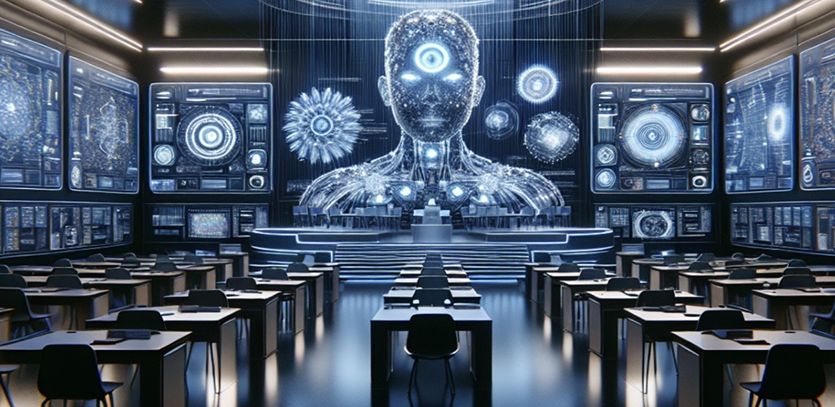Embracing AI for Personalized Learning
A private school in the UK is stepping into the future by announcing the launch of an AI-powered classroom. Students will be immersed in a virtual reality (VR) world where classes will be taught by a collection of AI systems. This has generated a wide range of responses, some enthusiastic about the potential for cost-effective, personalized education, and others warning of a dystopian future.
The goal is the promise of precision teaching—personalized teaching based on tracking what a student knows, needs to know, and how they are learning. This level of precision education is impossible to achieve in traditional brick-and-mortar settings with current teacher-to-student ratios. The hope is that including AI in the educational process can make personalized learning more feasible and scalable.
While cost savings are important, we should not be focused on reducing cost or the number of teachers we need. Instead, we should focus on providing better educational experiences to a greater number of students. Instead of thinking in terms of lowering costs, we need to aspire to improve education and broaden its reach.
Of course, critics argue that AI in education will lead to a soulless, bleak future, in which education lacks the human touch. However, if the concern is that an AI-driven classroom is soulless, then efforts should be directed at ensuring it achieves the opposite. We should aim to create a safer, more reliable learning experience that could not be achieved otherwise.
The future of AI in education should not be about replacing teachers with machines. Instead, it should be about integrating AI to support teachers, expand their reach, and relieve them of repetitive tasks, allowing them to focus on elements that require a human touch. AI can handle certain technical subjects, such as basic math skills, where instruction can be standardized and personalized at scale. This gives back time for our teachers to interact with students on both an intellectual and emotional level.
In the UK model as it is outlined, teachers still play an essential role, particularly in areas where human interaction is crucial, such as monitoring students' well-being, providing emotional support, and understanding the nuances of each student's personal challenges. AI can serve as an amplifier, ensuring that every student gets the attention and tailored instruction they need, while teachers can concentrate on the more personalized and complex aspects of education.
During the pandemic, we had to adapt education: recording lectures, work on Zoom, and teach asynchronously. We learned to use the technology where we could so educators could focus on the more interactive and engaging elements of teaching. With the same attitude, we can combine AI and human instruction to create a richer educational experience.
In practice, teachers in an AI-enhanced classroom will focus on evaluating the educational experience and providing essential feedback. Teachers will ensure that machines deliver the planned content effectively but also adapt and respond to areas where human intuition and understanding are required. They will make sure that every aspect of a student's education, from academic progress to personal development, is comprehensively addressed.
Integrating AI into education presents a unique opportunity to enhance and personalize learning while allowing teachers to focus on what they do best—engaging with students on a personal level and addressing their individual needs. By adopting this hybrid approach, the machine will help us transform education into a more interactive personal experience for all students.
Kristian Hammond
Bill and Cathy Osborn Professor of Computer Science
Director of the Center for Advancing Safety of Machine Intelligence (CASMI)
Director of the Master of Science in Artificial Intelligence (MSAI) Program

